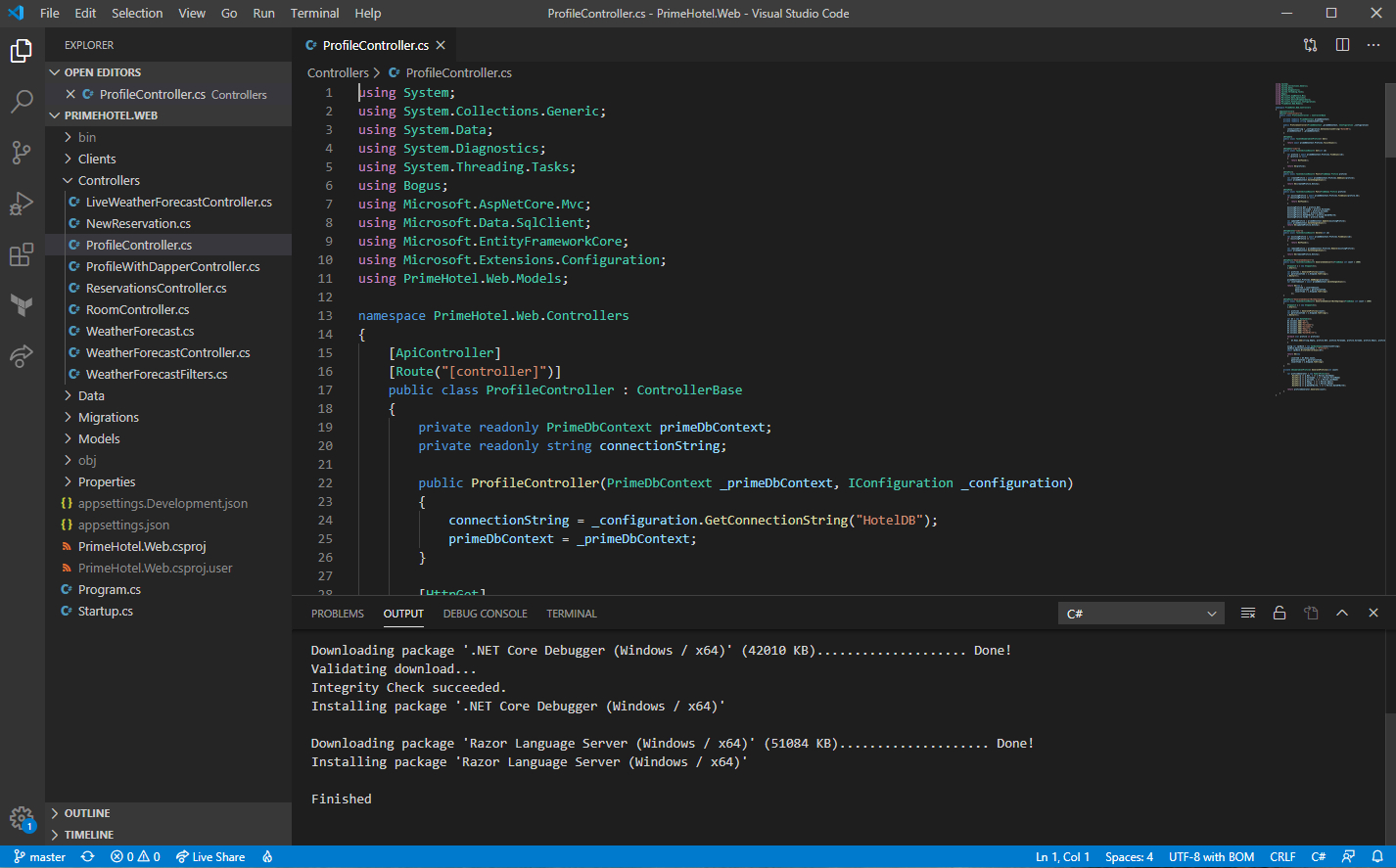Step 3: Now open Visual Studio, start a new Console Application and give any name you want. Step 4: Now Drag and Drop database file from the Documents to the Project Directory folder. Step 5: Write a Namespace for connectivity as in the following code snippet. Version 1.7 reverts the fix in 1.6 - because the correct fix is in Visual Studio itself. That fix is available from Visual Studio 2017 Version 15.9 Preview 3. The updated project template for C# sets the.csproj back to the v1.5 state, with these 2 lines: Exe true. Creating a project. Run Visual Studio and select File - New - Project in the application menu. In the New Project window, select the Visual C template - Windows and in the next menu select Empty Project. Let's name this project 'FirstApplication'. Create a folder for your projects in your Dropbox folder, for example, 'cpp/' (as in Plus Plus). A console application facilitates the reading and writing of characters from a console - either individually or as an entire line. It is the simplest form of a C# program and is typically invoked from the Windows command prompt.
In this 5-10 minute introduction to the Visual Studio integrated development environment (IDE), you'll create a simple Visual Basic application that runs on the console.

If you haven't already installed Visual Studio, go to the Visual Studio downloads page to install it for free.

If you haven't already installed Visual Studio, go to the Visual Studio downloads page to install it for free.
Visual Studio Console Application Not Showing
If you haven't already installed Visual Studio 2022 Preview, go to the Visual Studio 2022 Preview downloads page to install it for free.
Create a project
First, you'll create a Visual Basic application project. The project type comes with all the template files you'll need, before you've even added anything!
Open Visual Studio 2017.
From the top menu bar, choose File > New > Project.
In the New Project dialog box in the left pane, expand Visual Basic, and then choose .NET Core. In the middle pane, choose Console App (.NET Core). Then name the project HelloWorld.
If you don't see the Console App (.NET Core) project template, click the Open Visual Studio Installer link in the left pane of the New Project dialog box.
The Visual Studio Installer launches. Choose the .NET Core cross-platform development workload, and then choose Modify.
Note
Some of the screenshots in this Quickstart use the dark theme. If you aren't using the dark theme but would like to, see the Personalize the Visual Studio IDE and Editor page to learn how.
Open Visual Studio.
On the start window, choose Create a new project.
In the Create a new project window, choose Visual Basic from the Language list. Next, choose Windows from the Platform list and Console from the project types list.
After you apply the language, platform, and project type filters, choose the Console Application template, and then choose Next.
Note
If you do not see the Console Application template, you can install it from the Create a new project window. In the Not finding what you're looking for? message, choose the Install more tools and features link.
Then, in the Visual Studio Installer, choose the .NET Core cross-platform development workload.
After that, choose the Modify button in the Visual Studio Installer. You might be prompted to save your work; if so, do so. Next, choose Continue to install the workload. Then, return to step 2 in this 'Create a project' procedure.
In the Configure your new project window, type or enter WhatIsYourName in the Project name box. Then, choose Next.
In the Additional information window, .NET Core 3.1 should already be selected for your target framework. If not, select .NET Core 3.1. Then, choose Create.
Visual Studio opens your new project.
Visual Studio Console Application Output
Create the application


After you select your Visual Basic project template and name your project, Visual Studio creates a simple 'Hello World' application for you. It calls the WriteLine method to display the literal string 'Hello World!' in the console window.
If you click the HelloWorld button in the IDE, you can run the program in Debug mode.
When you do this, the console window is visible for only a moment before it closes. This happens because the Main method terminates after its single statement executes, and so the application ends.

Add some code
Let's add some code to pause the application and then ask for user input.
Add the following code immediately after the call to the WriteLine method:
This pauses the program until you press a key.
On the menu bar, select Build > Build Solution.
This compiles your program into an intermediate language (IL) that's converted into binary code by a just-in-time (JIT) compiler.
Run the application
Click the HelloWorld button on the toolbar.
Press any key to close the console window.
Next steps
Congratulations on completing this Quickstart! We hope you learned a little bit about Visual Basic and the Visual Studio IDE. To learn more, continue with the following tutorial.